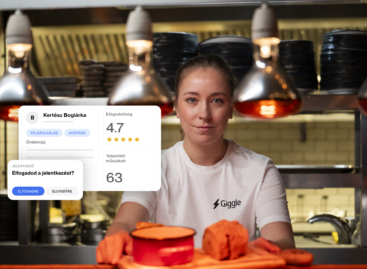Trend cocktail – analysed, not forecasted!
One of the most influential factors in Hungary’s restaurant business is globalisation – in both the general sense of the word and in the culinary sector. Hungarian hospitality businesses must adapt to this trend if they wish to stay on their feet. The information that you can read in this article is based on what the author has read in the surveys conducted by trade organisations and in social media, in studies, and in the evaluations of foreign journalists and chefs.
Restaurant owners and chefs have to do their work in accordance with different guest and employee expectations than 5-10 years ago. The growing number of choices for guests and the strengthening competition requires harder work from both restaurant owners and chefs than before! Young chefs are rapidly changing their concepts and digital technology brings irreversible changes into the lives of restaurants. Guests are more and more concerned about their health, they want to know what they are eating and where it comes from. They are looking for the best quality available for their money and for added value if possible.

Guests are also more and more interested in the CSR activities of hospitality units and brands. Restaurants can play an important role in reducing food waste too, and this falls in line with the trend of using seasonal ingredients. Food has become a matter of trust, because ingredients labelled ‘organic’ and the need for allergen- and gluten-free and low-carb food products. The hyper-local approach is spreading in the world of restaurants: small gardens are cultivated in the backyard or on the balcony of restaurants, with chefs growing their own vegetables, herbs and spices. We are living in an age when everything is about the ingredients, simple, fresh and natural produce is more valued than ever before.
In the USA the fresh vegetable consumption of consumers younger than 40 years increased by 52 percent in the last decade. The world’s gastronomy is also going in this direction. For instance vegetables are replacing pasta and mashed potato as sides. Suppliers are investing money in meat-free technology. The popularity of sea plants is also growing in the restaurant world. When meat is used in cooking, it is done differently than before, for instance meat is cut differently and new parts are ‘discovered’ for cooking purposes.

This year the fine casual concept enters the restaurant business in the USA. What does this mean? Cuisine that represents higher quality than the average, but fewer ingredients are used and the setting is simpler. In the bars and restaurants where breakfast is served it is very often made available throughout the day. In Western Europe competition is becoming stronger in the so-called fourth meal segment, when guests are served food late at night. Major players such as Amazon are entering the food delivery business and this can cause problems for companies specialising in this field, and for those firms which deliver ingredients for home cooking purposes (meal kit segment). //
Related news
No more “pig in a poke” in hospitality: How Eventrend Group reformed workforce management with the help of Giggle
🎧 Hallgasd a cikket: Lejátszás Szünet Folytatás Leállítás Nyelv: Auto…
Read more >Let’s taste the vibrant experiences! – Asian-Hungarian fusion experience in the heart of the city center
🎧 Hallgasd a cikket: Lejátszás Szünet Folytatás Leállítás Nyelv: Auto…
Read more >Taxes and proportions
🎧 Hallgasd a cikket: Lejátszás Szünet Folytatás Leállítás Nyelv: Auto…
Read more >Related news
The Temu model is at a turning point: extra-cheap online imports may become more expensive from 2026
🎧 Hallgasd a cikket: Lejátszás Szünet Folytatás Leállítás Nyelv: Auto…
Read more >Climate-tolerant alternative in arable fields: peanuts could be one of the winners of climate change
🎧 Hallgasd a cikket: Lejátszás Szünet Folytatás Leállítás Nyelv: Auto…
Read more >Experience, timing, awareness: a new travel logic is emerging towards 2026
🎧 Hallgasd a cikket: Lejátszás Szünet Folytatás Leállítás Nyelv: Auto…
Read more >






